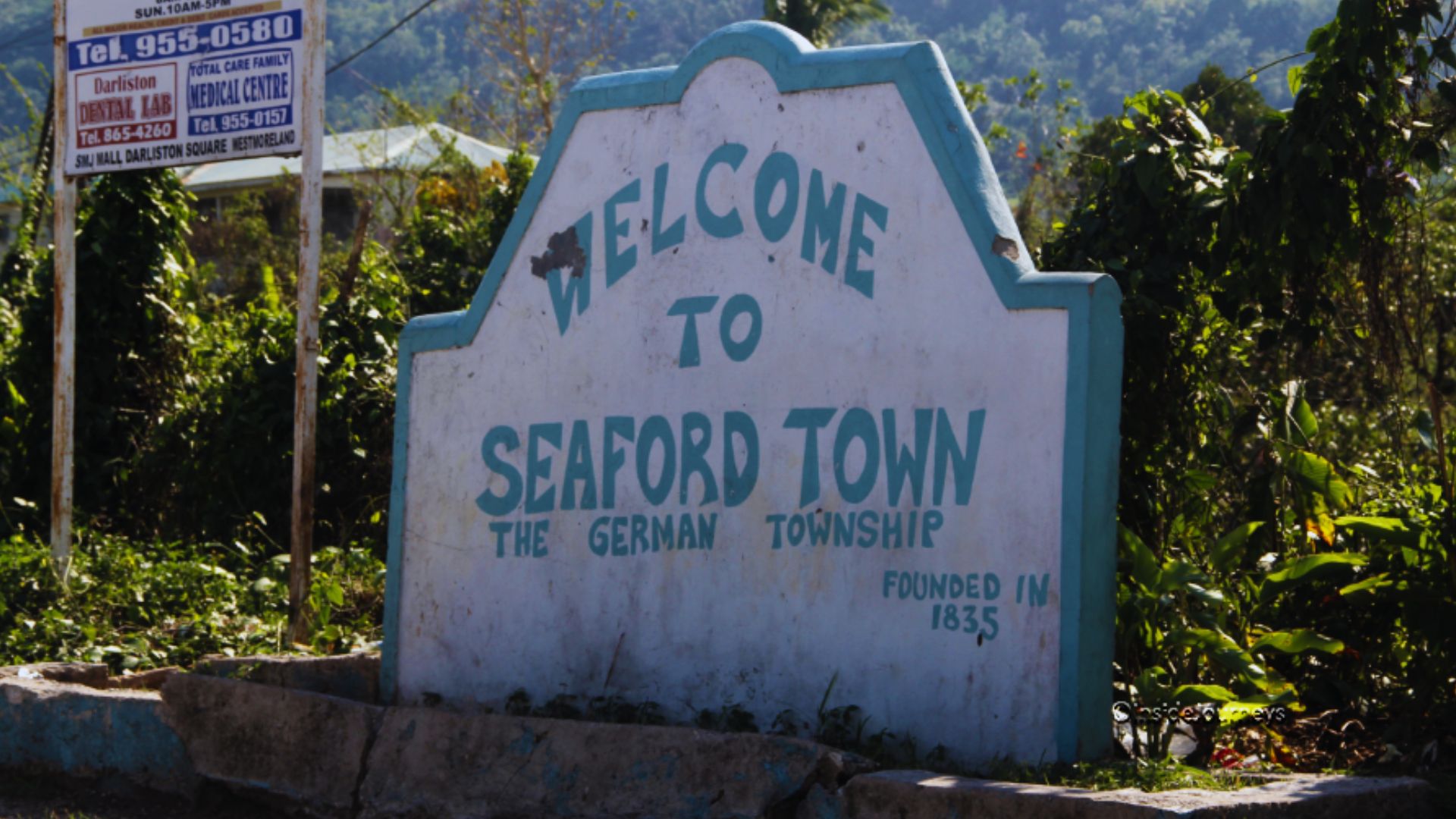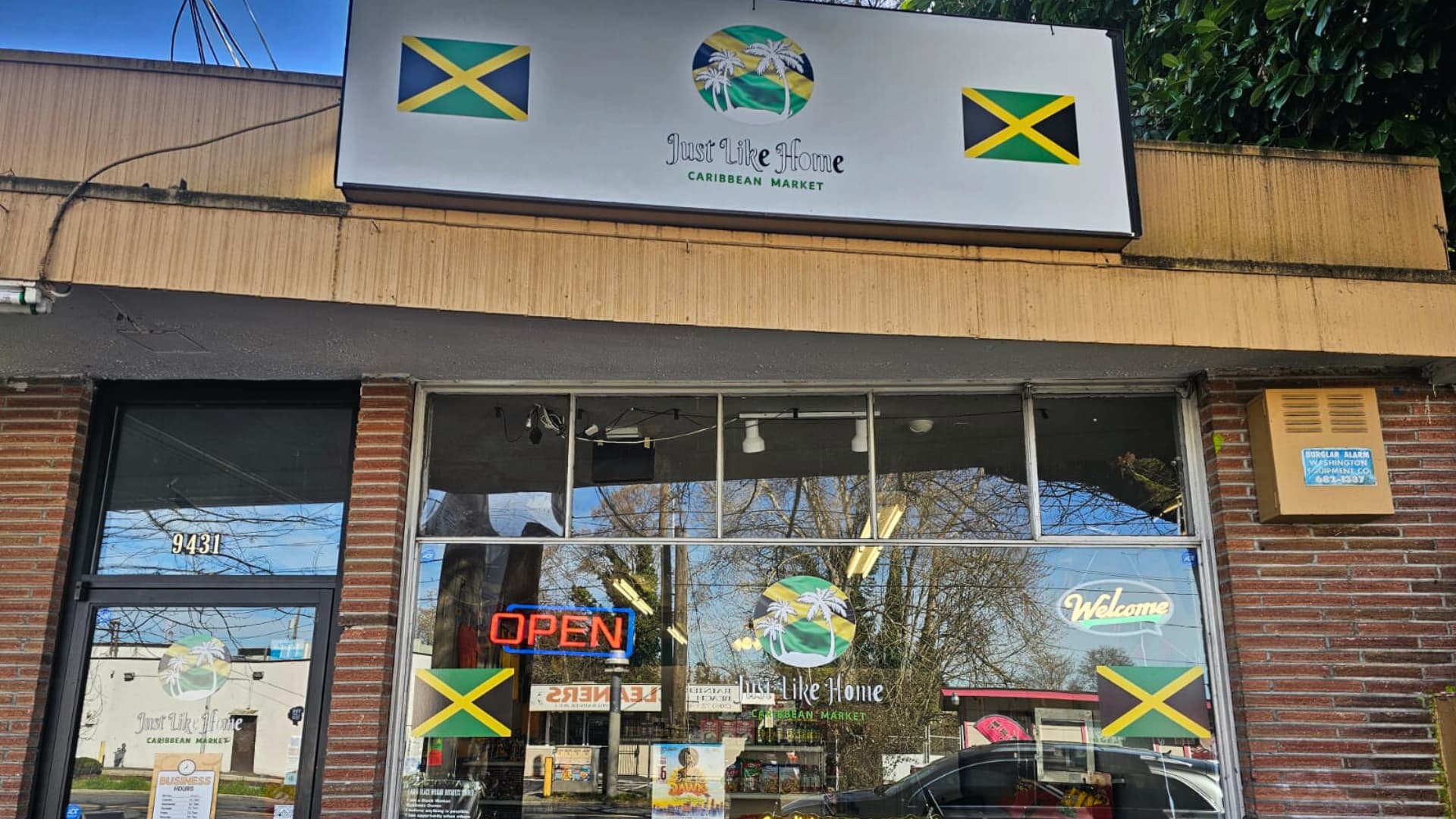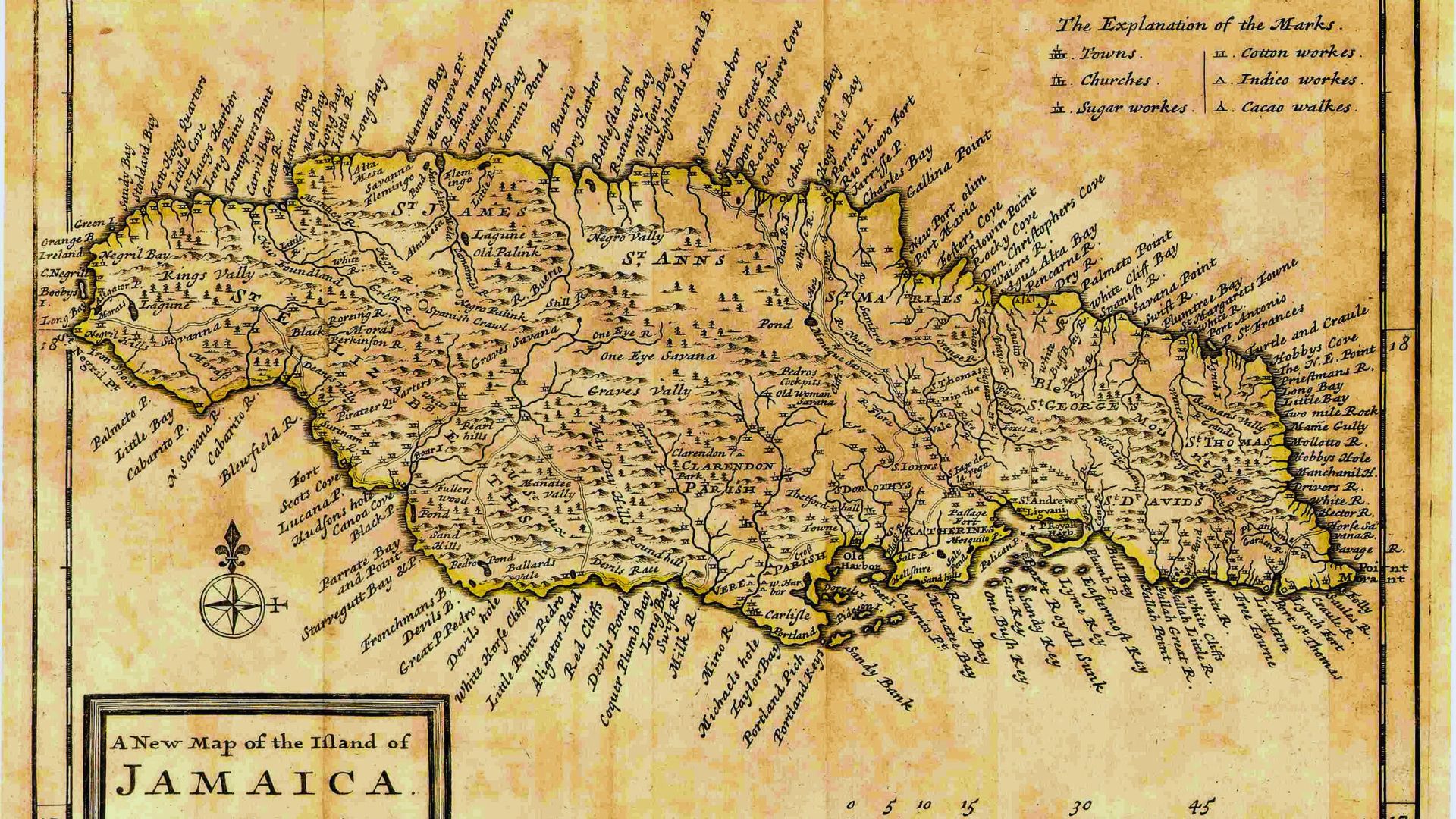A woman want to hold down a man
And want to do it as fast as she can
Balmer say you bring a fowl
And some silver in a bowl
And I will fix you in the balm yard
Chorus: Come along and watch the healing in the balm yard
Halleluiah! Healing in the balm yard.
(Everard Williams :1950s)
My uncle Butt’s death when I was 15 years old and the family controversy that ensued about the possible role of my grandmother’s visit to a balm yard on the day he died, despite his objections, served as a catalyst to resurrect earlier childhood memories that I had kept deeply buried in my subconscious. Memories were resurrected of the day my grandmother had taken me to a balm yard, somewhere in the community of Porus, six miles from Mandeville, and the family stories I had heard about Elfreda Senior, allegedly the obeah woman whose shop I was warned never to enter. “We would rather go without, than buy anything from that obeah woman’s shop.” was the dire warning I got. Not that I would ever have, because those ‘stories’ as well as the very look of the place had created in me a terrible fear. Rumors about Elfreda Senior abounded in the community. One was that she kept a special obeah snake, a conga, that licked all the sugar, flour, rice and cornmeal packages prepared for sale, to ensure repeat customers. Elfreda was a short, obese broad-faced woman with a pear-shaped figure, non-existent hips and oversized protuberant breasts. When she spoke, her words were almost intelligible. When I grew older I surmised that she must have been struggling with ill-fitting dentures. To the over-imaginative mind and eyes of a six year old child who had been warned about her ‘evilous’ ways, she was even worse than the ‘Black-Heart Man’ who was said to frequent lonely roads in a black car and kidnapped children so he could cut out their hearts for his black magic.
I had my survival worked out perfectly. Whenever I had to pass Elfreda’s shop, I knew exactly at what point in the incline to the square I should increase my pace so I could run past the shop on the opposite side of the road, my head held stiffly, eyes staring straight ahead. It did not help that on the infrequent times I yielded to temptation and glanced across, the shop was very dark. That confirmed what was being said, as well as my worst fears if she ever caught me!
Elfreda had a husband George and a son. The family, by the standards of the day was not poor. They lived beside the shop in a house with a verandah and owned a car which Arnold the son used as a taxi. Elfreda and her husband were caricatures of the Jack Spratt nursery rhyme. She was as fat as Mass George was thin. He was a wizened, henpecked man, who constantly and futilely tried to defend his boisterous, aggressive wife from the frequent vituperative verbal attacks from some persons in the community. She was also the favourite target of religious zealots who warned against her; of children who threw stones at her dog; of women who defied her to try her obeah on them. The men largely ignored her. At no time did I ever see customers either approaching or leaving her shop. The big question was therefore, who patronised Elfreda’s obeah-cum- grocery shop?
Elfreda had a particularly virulent hatred for the Hall family. She disliked their independence, their spirit, their pride. But most of all she disliked the fact that their shop was the most popular in the community. The family frequently recounted with a certain glee, the time Elfreda had indulged in a tracing match with Icy, my mother and the most irreverent girl in the family. She was a saucy eighteen year-old when it happened. As my mother retold it, it was on a Tuesday morning, as she was passing on her way to dressmaking classes at Mrs. Blair in Knockpatrick, the district adjoining Hillside.
“Obeah woman live yah, oh, oh, Obeah woman live yah, oh, oh,’ Icy chanted as she looked over at Elfreda’s house. Her response was to shout. “ Gal, if is mi yu talking, come back yah and sey soh.” Never one to refuse a challenge, Icy turned back, planted her feet securely in front of Elfreda and sang out “Obeah woman live yah!” as she pointed her finger directly in the older woman’s face. “Yu renking little gal, I gwine show yu and yu fambily obeah, I put a curse on all a unnu. None a unnu will ever amount to nutten, mark my words from today henceforth, all a de Hall family cursed. As a matter of fack, one a unnu soon dead!” At which Icy merely laughed in Elfreda’s face, swung her hips and repeated her line “Obeah woman live yah” as she sauntered away.
When West and Samuel heard about the incident, they reprimanded her severely and admonished her and the other children to give Elfreda and her kin a wide berth at all times. But here the unity in approach ended. While Samuel prayed and asked for divine guidance, West , unknown to Samuel visited her favourite balm yard in Porus. She was given various potions to place in bottles and bury around the periphery of the yard to prevent Elfreda from successfully breaching the ‘barrier’ and carrying out her threat. When Samuel was stabbed less than a month after the incident, no one could convince the Halls or the entire community for that matter, that Elfreda had not had a hand in the attack.
When she attempted to visit the Halls to express her regret, Elfreda was asked to leave before she had properly entered the gate. Thus it was that the ‘power’ of obeah gained further legitimacy. The vendetta between the two families was to last for more than a generation, bringing innumerable heartache and bitterness to both. Elfreda Senior and her family had learned their lesson of rejection by the Halls very well. When my Uncles died, they kept their distance.
Obeah is said to have been taken to the West Indies by our African forefathers during the Transatlantic Slave Trade which flourished between the 16th and the 19th centuries. One theory about its origin is that it is a tradition of the Igbo people of the Bight of Biafra or Mafra – now eastern Nigeria – a major 18th. century Portuguese slave-trading port, named for a town in southern Portugal. The word obeah or ‘Obia’ means doctoring in Igbo. These specialists in ‘Obia’ predicted the future, mixed healing potions and made charms for protection, similar to what present-day obeah men do. Another theory is that the word obeah comes from the Ashanti people of Ghana who called the practices of their priests ‘Obayifo’, which in Akan language means witchcraft. Both the Igbo and Akan people came to the West Indies. In 1967, the eastern region of Nigeria seceded from the Nigerian state and declared itself the Republic of Biafra. It was short-lived. A vicious civil war ensued. Biafra surrendered in 1969 and in 1975 the Nigerian government renamed the region the Bight of Bonny.
Still another theory closely aligned to ‘Obia’ or ‘Obayifo’ is the word ‘Juju’, a spiritual belief system practised in Ghana and other West African countries, among the Hausa-speaking people. The juju man is well versed in traditional spiritual medicines, which can be employed for good or evil – white juju for good and black juju for evil. One claim is that the word juju is derived from the French word joujou which means plaything or from the Hausa language and means ‘fetish’ or ‘evil spirit.’
Historically, obeah is said to have given the slaves the power to resist their masters, by harnessing supernatural forces in their favour. The belief was that obeah could be used to cure diseases, as protection from harm, as well as to cause harm, or even resuscitate the dead. Overtime obeah has come to mean the use of charms, talismans, potions for evil or malevolent magical purposes. Today, the obeah man’s intimate knowledge of herbs and potions is his most powerful arsenal in persuading those who seek the assistance of his supernatural power.
The balm yard is the place where you visit the obeah man, although not all balm yards have obeah men. Some have ‘Mothers’ or ‘Moddas’ – a combination of priestess, prophet and bush doctor – who ‘reads’ you, tells you what’s wrong with you, gives you a healing bath and prescribes bush medicine for you. Sometimes the diagnosis is for a natural ailment, at other times ‘Mother’ ‘sees’ where someone has hurt you, and your bath is given to drive out the evil spirit. In 1990, American author Zora Neale Hurston wrote that, from her 1930s travel to the country, Jamaica has more useable plants for medicinal and edible purposes than any other place on earth.
I must have been about seven years old when I was taken to the balm yard. . You could not see it from the road and there was no sign. I wondered where we were going. My grandmother had not told me. I had simply been awakened earlier than usual that morning and told I would not be going to school. Instead I would be accompanying her to visit a lady in Porus. We went by the six o’clock Enterprise Bus. We clambered up a rocky path with a tributary of the Rio Minho snaking below, and overhanging tangerine, avocado, star apple and guava trees still glistening with the early morning dew. I looked enviously at the lush, shiny purple-skinned star apples and wondered whether we would be getting any to take home. I loved star apples., but we had only one tree. Tangerines we had in abundance, but not star apples.
My grandmother’s laboured breathing had begun to reveal the extent of our exertions when the path suddenly widened. Before me, I saw a colourful array of triangular-shaped flags set in a circle at the front of a modest block and steel building.. In the centre of the circle was a table covered in white cloth, on which stood a white enamel basin and a goblet full of red and yellow croton leaves and the blood-red aralia, popularly known as the ‘graveyard plant.’ A black flag on a tall pole had pride of place at the entrance.
As we walked into the yard, we were greeted by a young lady dressed in a long, loose blue smock. She wore a thick white plaited cord around her waist. Her turban was made from the same cloth as her robe. On her feet she wore the popular ‘puss boots’ or white canvas sneakers. She greeted us with a shy smile and told us that we must ‘tu’n the roll’ before going into the hall. Holding me firmly by the arm, Mama marched me around the circle framed by the flags seven times before guiding me into the house. I was glad for her support as I was dizzy, both from hunger, not having had my full breakfast and from going around in circles, something I had never been able to do without feeling dizzy.
The hall was furnished with unvarnished wooden serviceable benches on which several other persons were seated. At the top of the room, a tall, black, formidable-looking woman pacing from one end of the room to another, shouted dire warnings about the fruits of wickedness, deceit, devil worship and sin Eternal damnation and the fires of hell would surely fall on all evildoers. She was dressed similarly to our usher, but her turban was more intricately wrapped, with a pointed protrusion to the front . She wore a yellow pencil over her right ear and a pair of scissors dangled from the corded belt at her waist.
At one point in her preaching, she looked at my grandmother and me with piercing eyes, groaned horribly and collapsed to the floor shaking uncontrollably. She was immediately grabbed by two aides who appeared seemingly out of nowhere. She struggled free, took two tentative steps, as if she were learning to walk and then proceeded to assume the gait of my crippled Uncle Butt. My heart leapt to my mouth as the woman looked directly at my grandmother and screamed unintelligibly until saliva ran down the sides of her mouth. She then went into a dead faint and was carried to an inner room by her aides. I clutched Mama’s hand in fear. She did not respond as she too seemed to be in a trance.
After what seemed like an interminable time, the preacher – as I had named her – returned and beckoned to my grandmother and me to follow her. I was paralyzed by fear. My legs failed to support me. I was virtually lifted from my seat and dragged into the room. Still dressed in her robe and turban, astonishingly, the preacher smiled at me as we entered. She told my grandmother that she had ‘drawn’ the illness of someone in her family. Mama explained that it was her son who had had ‘infantile paralysis’ – or polio as it came to be known later – with the development of the vaccine.
It was my time for an examination – looking into my eyes and turning my head to and fro – with an explanation for an illness of which I was unaware I even had. The diagnosis was that some unseen person, a long since deceased member of the family was, out of love, playing with me, unaware of the potential harm being done to me. The most likely individual was my grandfather, who in life had been a District Constable, and who in death still kept watch over the home. On his many rounds – day and night – he sometimes encountered me as I ran around the house with my dog. To minimise danger to myself a bath was prescribed.
I was stripped naked and placed, shivering, embarrassed and very, very afraid in a huge metal tub or wash pan of cold dark green water on which floated several indistinguishable leaves. As the preacher bathed me, she applied several mild slaps to my shoulders, arms and legs, while she muttered unintelligible incantations. Mama stood by with an encouraging smile. Visions of star apples had long disappeared from my mind.
As we left that house – I was later to find out that it was a typical balm yard – I knew instinctively that this experience was to be kept secret from both family and friends. In my childish mind I battled with feelings of betrayal by my grandmother, an abiding shame and an accompanying anger at my helplessness to avoid an unwanted and unwarranted experience. The cracks on my grandmother’s pedestal, still invisible, still unrecognizable for what they were, had begun.
The cracks widened after Uncle Butt’s death, some eight years later. Family whisperings added to the ‘belief’ that my grandmother had gone to consult a balm yard ‘Modda’, while Uncle Butt was hanging himself. Had she remained at home, would he have resisted the temptation to end his life? We will never know. We can only speculate. What of my grandmother, how did she really take Uncle Butt’s suicide; the fact that her two oldest children had ended their lives in this tragically horrible way?
I still ponder the inherent contradictions in my grandmother’s behaviour. She was an ardent Christian who read her Bible, prayed every day and sang only hymns. She professed to abhor obeah, had nothing to do with Elfreda Senior, yet my grandmother had taken me to a balm yard to protect me from the spirit world and consulted one to help her troubled son, despite his objections.
Much has been written by our sociologists on the power of generational cultural continuities – where Western and African cultures share an uneasy co-existence in Caribbean societies, with their common history of slavery and colonisation. How have we navigated this contradiction? Perhaps the answer lies in the world of juju. Perhaps we have found a way to rationalize the cognitive dissonance individuals like my grandmother must have experienced in this commingling of contradictory religious cultures – Modda and the balm yard for healing, the obeahman for inflicting pain and Christian religious orthodoxy for eternal salvation. Are Christianity and Obeah mutually exclusive or, can they co-exist? History and currency suggest they can.






